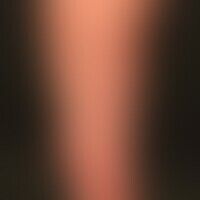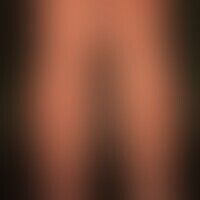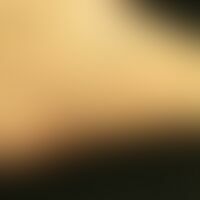Image diagnoses for "Leg/Foot"
404 results with 1180 images
Results forLeg/Foot
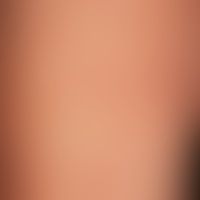
Purpura pigmentosa progressive L81.7
Purpura pigmentosa progressiva. irregularly configured, reddish-brownish spots with petechiae that cannot be pushed away (cayenne pepper spots).

Pyoderma gangraenosum L88
Pyoderma gangraenosum: deep, painful ulcer that has existed for several months; ulcerative colitis ulcerosa that is located at the base of the tract.

Nevus pigmentosus et pilosus D22.L6

Erythromelalgia I73.82
Erythromelalgia. seizure-like, painful, hyperemic, reddened and swollen skin of the hands and feet with increased sensitivity to heat. there is burning pain and oedema.

Hypertrophic Lichen planus L43.81
Lichen planus verrucosus. numerous, chronically stationary, 1-4.0 cm in size, rough, brownish or brownish-red, rough, wart-like plaques as well as severe itching. scarring after healing

Angiokeratome, solitary D23.L

Hemochromatosis E83.1
Haemochromatosis: small and large patches of hyperpigmentation on both lower extremities, flat over the knees and without symptoms.

Klippel-trénaunay syndrome Q87.2
Klippel-Trénaunay syndrome: extensive vascular malformation with extensive nevus flammeus affecting the trunk and both arms. So far no evidence of soft tissue hypertrophy. No AV fistulas.

Erysipelas A46
erysipelas. extensive redness and swelling of the left foot in a 71-year-old man. on the left back of the foot there is a sharply limited overheated erythema with flame-like runners of 15 x 15 cm in size. the back of the foot is circumferentially enlarged and painful. secondary findings are the palpation of single, enlarged, pressure-dolent lymph nodes in the corresponding lymph drainage area of the groin region.

Eosinophilic granulomatosis with polyangiitis M30.1
Churg-Strauss syndrome: encircled central granulomatous regression zone (see histological preparation 1); on the right side the progression zone is outlined (see histological preparation 2).
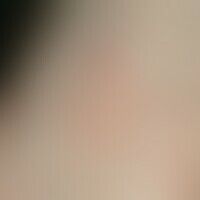
Tinea pedis (overview) B35.30
Tinea pedum: discrete, well defined, heart-shaped, slightly scaly erythema and hyperkeratosis on the right foot back of an 80-year-old female patient with exacerbated tinea pedum.
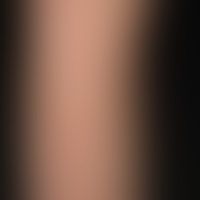
Skabies B86
Scabies (overview): itchy "rash" all over the body, existing for weeks; see previous figure. findings: disseminated, red scaly papules, partly also linearly arranged. itching at night intensified in bed warmth

